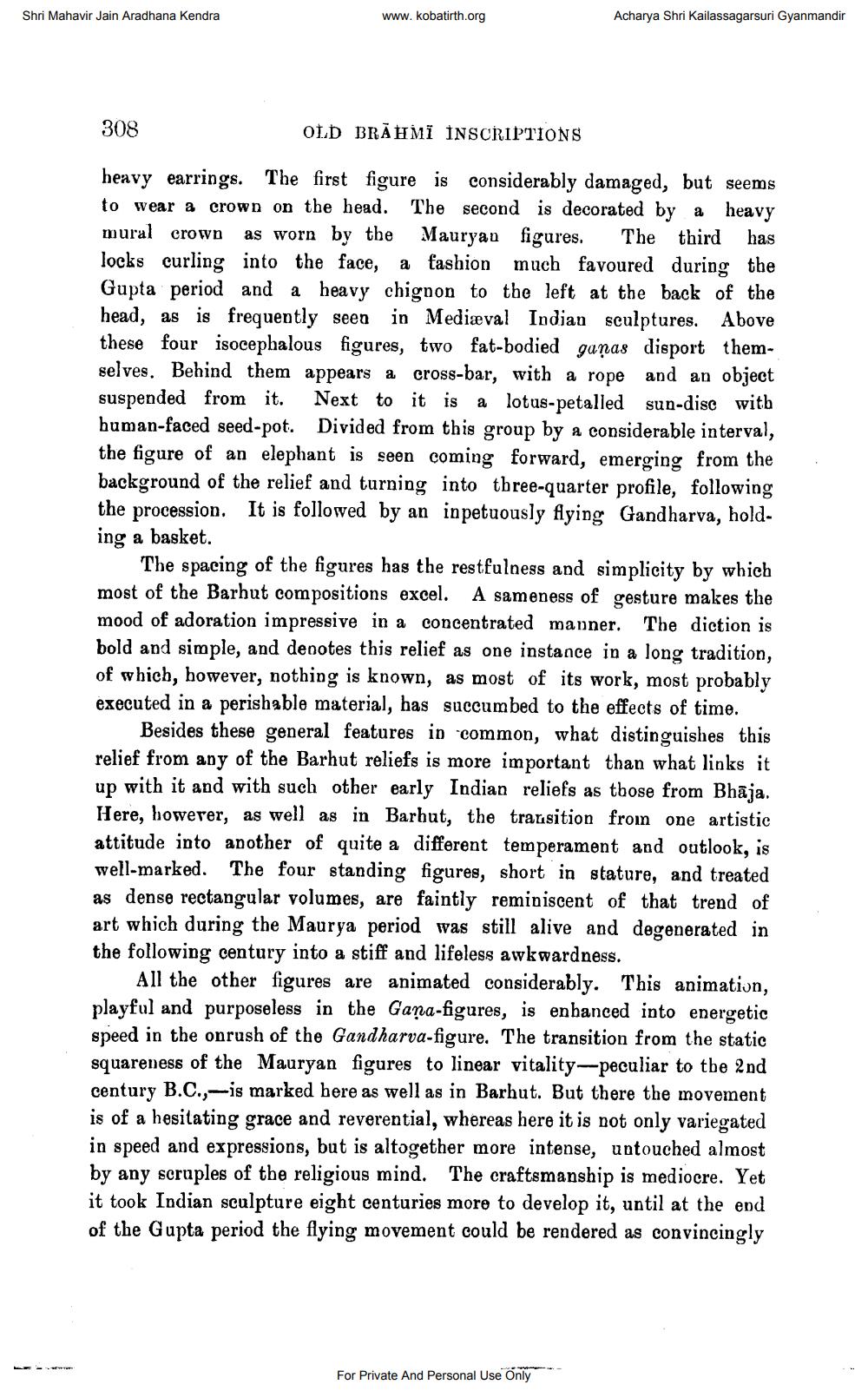________________
Shri Mahavir Jain Aradhana Kendra
www.kobatirth.org
Acharya Shri Kailassagarsuri Gyanmandir
308
OLD BRAHMI INSCRIPTIONS
heavy earrings. The first figure is considerably damaged, but seems to wear a crown on the head. The second is decorated by a heavy mural crown as worn by the Mauryan figures. The third has locks curling into the face, a fashion much favoured during the Gupta period and a heavy chignon to the left at the back of the head, as is frequently seen in Mediæval Indian sculptures. Above these four isocephalous figures, two fat-bodied gaņas disport themselves. Behind them appears a cross-bar, with a rope and an object suspended from it. Next to it is a lotus-petalled sun-disc with human-faced seed-pot. Divided from this group by a considerable interval, the figure of an elephant is seen coming forward, emerging from the background of the relief and turning into three-quarter profile, following the procession. It is followed by an inpetuously flying Gandharva, holding a basket.
The spacing of the figures has the restfulness and simplicity by which most of the Barhut compositions excel. A sameness of gesture makes the mood of adoration impressive in a concentrated manner. The diction is bold and simple, and denotes this relief as one instance in a long tradition, of which, however, nothing is known, as most of its work, most probably executed in a perishable material, has succumbed to the effects of time.
Besides these general features in common, what distinguishes this relief from any of the Barhut reliefs is more important than what links it up with it and with such other early Indian reliefs as those from Bhāja. Here, howerer, as well as in Barhut, the transition froin one artistic attitude into another of quite a different temperament and outlook, is well-marked. The four standing figures, short in stature, and treated as dense rectangular volumes, are faintly reminiscent of that trend of art which during the Maurya period was still alive and degenerated in the following century into a stiff and lifeless awkwardness.
All the other figures are animated considerably. This animation, playful and purposeless in the Gaņa-figures, is enhanced into energetic speed in the onrush of the Gandharva-figure. The transition from the static squareness of the Mauryan figures to linear vitality-peculiar to the 2nd century B.C.,-is marked bere as well as in Barhut. But there the movement is of a hesitating grace and reverential, whereas here it is not only variegated in speed and expressions, but is altogether more intense, untouched almost by any scruples of the religious mind. The craftsmanship is mediocre. Yet it took Indian sculpture eight centuries more to develop it, until at the end of the Gupta period the flying movement could be rendered as convincingly
For Private And Personal Use Only




